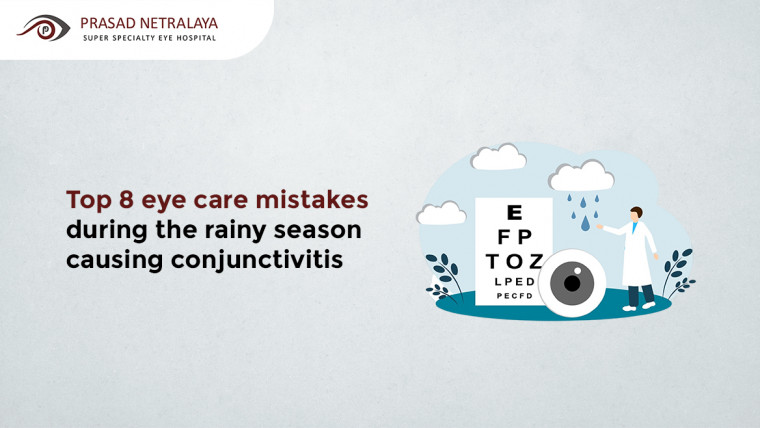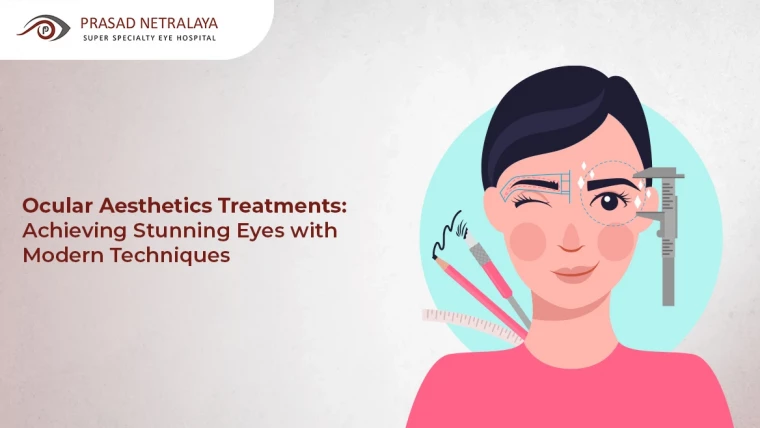As we age, it’s common for our eyesight to decline gradually. If you’ve noticed yourself holding your book further away than usual to focus or experiencing eye strain when doing work up close, it’s possible that you’re showing signs of presbyopia. But don’t worry; there are several presbyopia treatment options.
In this blog post, we’ll understand what presbyopia is, explore the range of presbyopia treatment options available, and dive into the factors to consider when choosing the best treatment for your needs.
Let’s get started.
Table of Contents
What Is Presbyopia?
Presbyopia is an age-related disorder that causes a loss of near vision and impairs a person’s ability to focus on close-up objects. It happens as the natural lenses of your eyes harden with age and lose their flexibility, making it hard to concentrate on nearby objects.
This typically starts around the age of 40 and gets worse with time
Presbyopia symptoms include blurry vision when looking at objects up close, eye strain/fatigue when focusing on objects close to you, and trouble seeing in dim light or at night.
List of Presbyopia Treatment Options
Here is a list of presbyopia treatment options that your eye doctor may recommend based on your individual needs and preferences.
1. Bifocal and Progressive Lens Eyeglasses
Bifocal and progressive lenses are popular presbyopia treatment options that use lenses with two or more prescriptions to correct vision at different distances.
Bifocal lenses have two sections: the primary section is designed for distance vision, while the second is designed for close-up vision.
Progressive lenses, on the other hand, have a more gradual transition between the distance and near-vision sections. This allows for a more seamless viewing experience.
However, it could take some time for users to become used to these lenses.
2. Contact Lenses
Contact lenses are a popular presbyopia treatment option, with two main types available: monovision and multifocal.
Monovision lenses work by having one lens for distance vision and the other for near vision, allowing the brain to adjust sight automatically.
Multifocal lenses have multiple prescriptions built into each lens, offering clear vision at various distances.
They work in the same way as multifocal glasses do, with different sections of the lens dedicated to different distances.
Multifocal lenses can eliminate the need for glasses or monovision contacts, but they may need an adjustment period.
3. Corneal Inlays
Corneal inlays are tiny, implantable lenses surgically inserted into the cornea to help correct presbyopia.
They are designed in a way to work with the non-dominant eye. This automatically allows the brain to adjust in order to achieve clear vision. The operation is quick and done on an outpatient basis.
The most popular types of corneal inlays are tiny, ring-shaped lenses that give patients good distance and up-close vision.
4. Monovision LASIK
Monovision LASIK is a refractive surgery that tries to fix one eye for distance vision and the other for near vision. This method achieves sharp vision at various distances by modifying the prescription of one eye.
For those who are accustomed to monovision contact lenses or who want to decrease their reliance on glasses, monovision LASIK can be a fantastic alternative.
However, some people could find it challenging to adapt to this kind of correction.
5. Multifocal LASIK
Multifocal LASIK is a surgical treatment in which a laser is used to produce many focal points on the cornea, allowing the patient to see clearly at various distances.
Each section of the cornea is adjusted to a specific power in this process, which functions similarly to multifocal contact lenses.
Although it’s a useful alternative to glasses or contact lenses, this surgery might not be appropriate for everyone as there are possible hazards and adverse effects.
6. Refractive Lens Exchange
Refractive lens exchange (RLE), also known as clear lens extraction (CLE), is a surgical operation used to repair visual impairments by replacing the natural lens of the eye with an artificial intraocular lens (IOL).
While it is done to address refractive abnormalities like presbyopia, this operation is comparable to cataract surgery. RLE can be an excellent alternative, but it is more invasive and riskier than other forms of treatment and might not be appropriate for people with certain eye disorders.
Finding the Right Presbyopia Treatment Options for You
There are various presbyopia treatment options available, ranging from non-surgical to surgical. It’s important to consult with an eye care professional to determine the best option for your individual needs.
If you’re experiencing symptoms of presbyopia, schedule an appointment with Prasad Netralaya today to explore your treatment options and regain clear vision.
Contact us today and take the first step towards a better vision!



